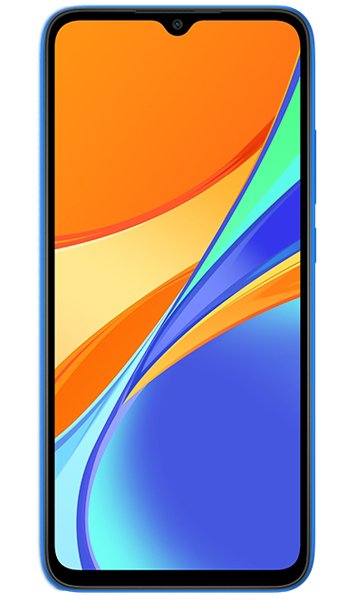BQ Aquaris U vs Xiaomi Redmi 9C Comparison and Differences
Smartphone 1

BQ Aquaris U
Smartphone 2

Xiaomi Redmi 9C
Smartphone 3
BQ Aquaris U or Xiaomi Redmi 9C Specs Comparison
or
 Common specs
Common specs
| Brand and model | BQ Aquaris U | Xiaomi Redmi 9C | |
| Rating | (+0) | (+0) | |
| Release date | September, 2016 | 2020, June 30 | |
| Dimensions (HxWxD) | 144.0 x 70.5 x 7.8 mm | 5.67 x 5.67 x 2.78 in | 164.9 x 77 x 9 mm | 6.49 x 6.49 x 3.03 in | |
| Weight | 142 g | 5.01 oz | 196 g | 6.91 oz | |
| Body Build | Polycarbonate | ||
| Case | buy from Amazon | buy from Amazon | |
| Colors | Gray | Midnight Gray, Sunrise Orange, Twilight Blue | |
| Battery | 3080 mAh, Li-Polymer, non-removable | 5000 mAh, Non-removable Li-Po | |
| Approximate price | 150 EUR | ||
| Check price | from Amazon | from Amazon |
 Screen
Screen
| Technology | LCD IPS | IPS LCD | |
| Touchscreen | capacitive touchscreen | capacitive touchscreen | |
| Display colors | 16M | 16M | |
| Screen size | 5" in | 6.53" in | |
| Screen area | 102.9 cm2 | ||
| Screen format | 16:9 (height:width) | 20:9 (height:width) | |
| Screen to body ratio | 68% | 81.1% | |
| Screen resolution | 720 x 1280 px | 720 x 1600 px | |
| Screen PPI /points per inch/ | 294 PPI | 269 PPI | |
| Screen protection | Scratch resistant | ||
| Other specs | - 400 nits (typ) | - 400 nits typ. brightness | |
| Screen protector | buy from Amazon | buy from Amazon |
 Camera and Video
Camera and Video
| Rear camera, main | 13 MP, Single | 13 MP, Triple | |
| Camera specs | -13 MP, ƒ/ 2.2, (wide), 1.12 µm | -13 MP, f/2.2, 28mm (wide), 1.0µm, PDAF -2 MP, f/2.4, (macro) -2 MP, f/2.4, (depth) |
|
| Functions | LED flash | LED flash, HDR | |
| Video | 1080p video | 1080p@30fps | |
| Front camera, selfie | 5 MP, Single | 5 MP, Single | |
| Specifications | 5 MP, ƒ/ | 5 MP, f/2.2, (wide), 1.12µm | |
| Functions | HDR | ||
| Video | 1080p@30fps |
 Performance
Performance
| Operating system - OS | Android 6.0 Marshmallow | Android 10, MIUI 12 | |
| Chipset | - Qualcomm Snapdragon 430 MSM8937 (28 nm) | - MediaTek Helio G35 (12 nm) | |
| CPU | - Octa-Core (4x Cortex A53 1.4GHz + 4x Cortex A53 1.1GHz) | - Octa-core (4x2.3 GHz Cortex-A53 & 4x1.8 GHz Cortex-A53) | |
| GPU | Qualcomm Adreno 505 | PowerVR GE8320 | |
| External memory | microSDXC (dedicated slot) | ||
| Internal memory | 2GB 16GB, 2GB · 16GB 2GB · 32GB | 32GB 2GB RAM, 64GB 3GB RAM |
 Benchmark
Benchmark
| Antutu 8 Total | 110239 | ||
| GeekBench 5 Single Core | 138 | ||
| GeekBench 5 Multi-Core | 532 |
 Communication and Connectivity
Communication and Connectivity
| SIM card | Dual SIM, dual stand-by (Nano SIM + Nano SIM) | Dual SIM (Nano-SIM, dual stand-by) | |
| Network | 2G / 3G / 4G / | GSM / HSPA / LTE | |
| Bands | -2G - B2 (1900), B3 (1800), B5 (850), B8 (900) -3G - B1 (2100), B2 (1900), B5 (850), B8 (900) -4G - B1 (2100), B3 (1800), B7 (2600), B20 (800) |
-2G - GSM 850 / 900 / 1800 / 1900 - SIM 1 & SIM 2 -3G - HSDPA 850 / 900 / 1700(AWS) / 1900 / 2100 -4G - LTE |
|
| Speed | HSPA 42.2/5.76 Mbps, LTE-A | ||
| GPRS | Yes | Yes | |
| Edge | Yes | Yes | |
| Wi-Fi | 802.11b, 802.11g, 802.11n,Wi-Fi Hotspot | Wi-Fi 802.11 b/g/n, Wi-Fi Direct, hotspot | |
| GPS | GPS, A-GPS, GLONASS | Yes, with A-GPS, GLONASS, BDS | |
| NFC | Yes | Yes (market/region dependent) | |
| USB | Yes, USB On-The-Go (OTG) | microUSB 2.0, USB On-The-Go | |
| Bluetooth | Bluetooth 4.2, A2DP | 5.0, A2DP, LE | |
| Harmful irradiation |
SAR EU - 0.596 W/Kg (head), 1.450 W/Kg (body) |
SAR - 0.73 W/kg (head) 0.52 W/kg (body) SAR EU - 0.35 W/kg (head) 0.78 W/kg (body) |
 Music and Audio
Music and Audio
| Radio | Yes | FM radio | |
| Headphone jack | Yes | Yes |
 Other features
Other features
| Sensors | - Proximity, Accelerometer, compass, gyro | - Fingerprint (rear-mounted), accelerometer, proximity , Infrared port | |
| Other extras |
- 10W |
Reviews and Opinions on BQ Aquaris U and Xiaomi Redmi 9C
If you had to recommend one of these phones to a friend, which one would it be and why? Share your arguments using the Add Opinion button!
